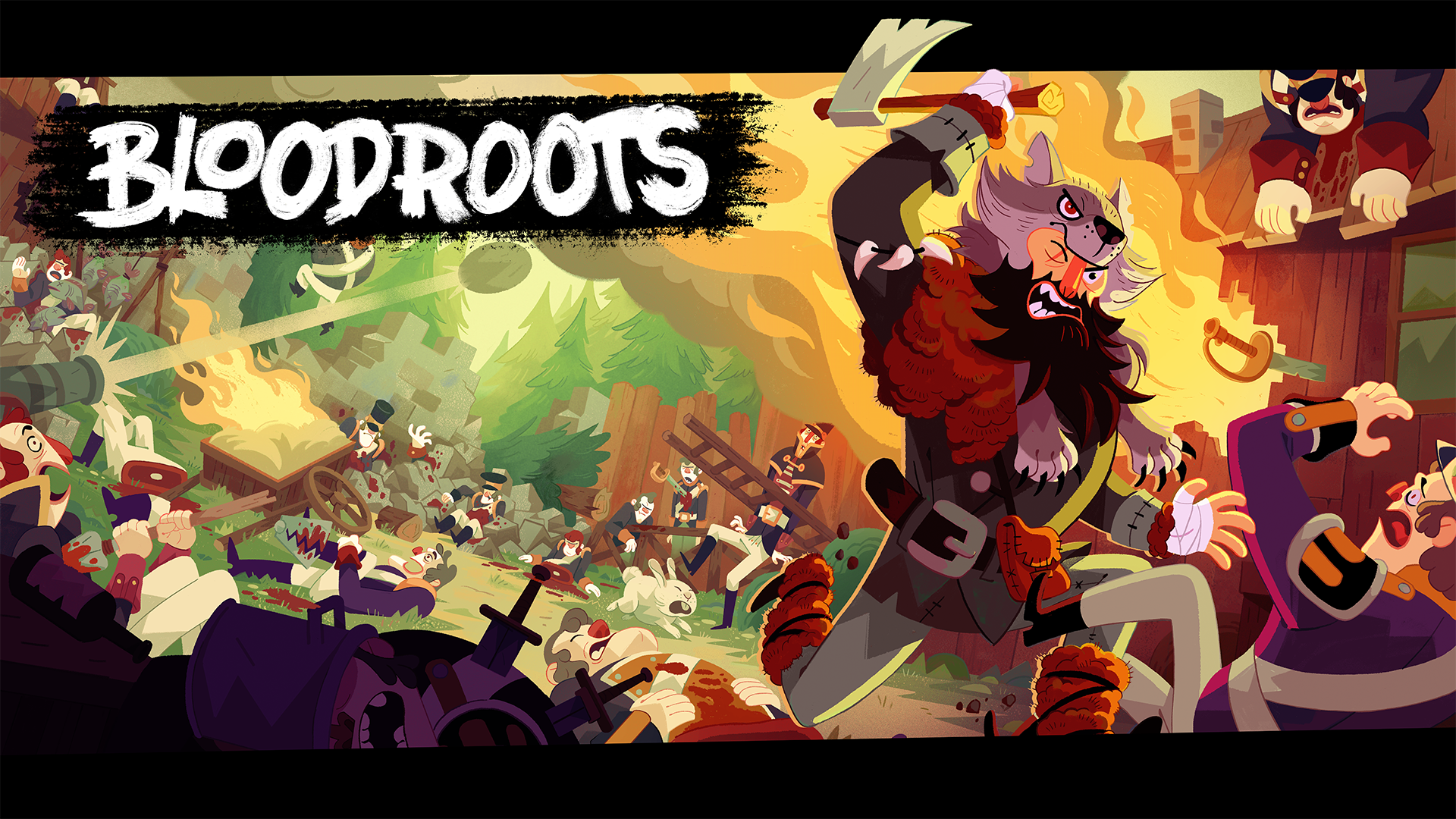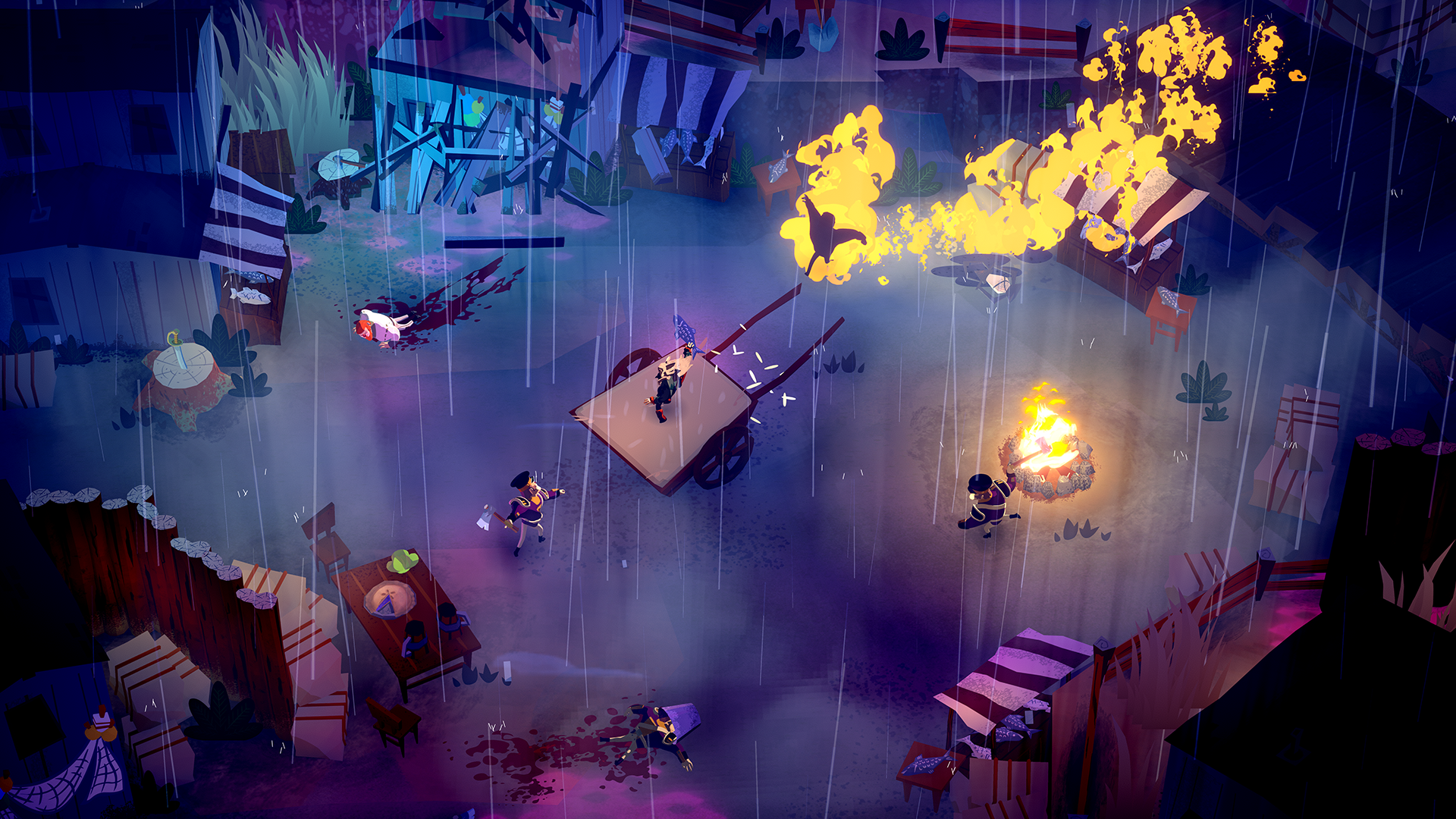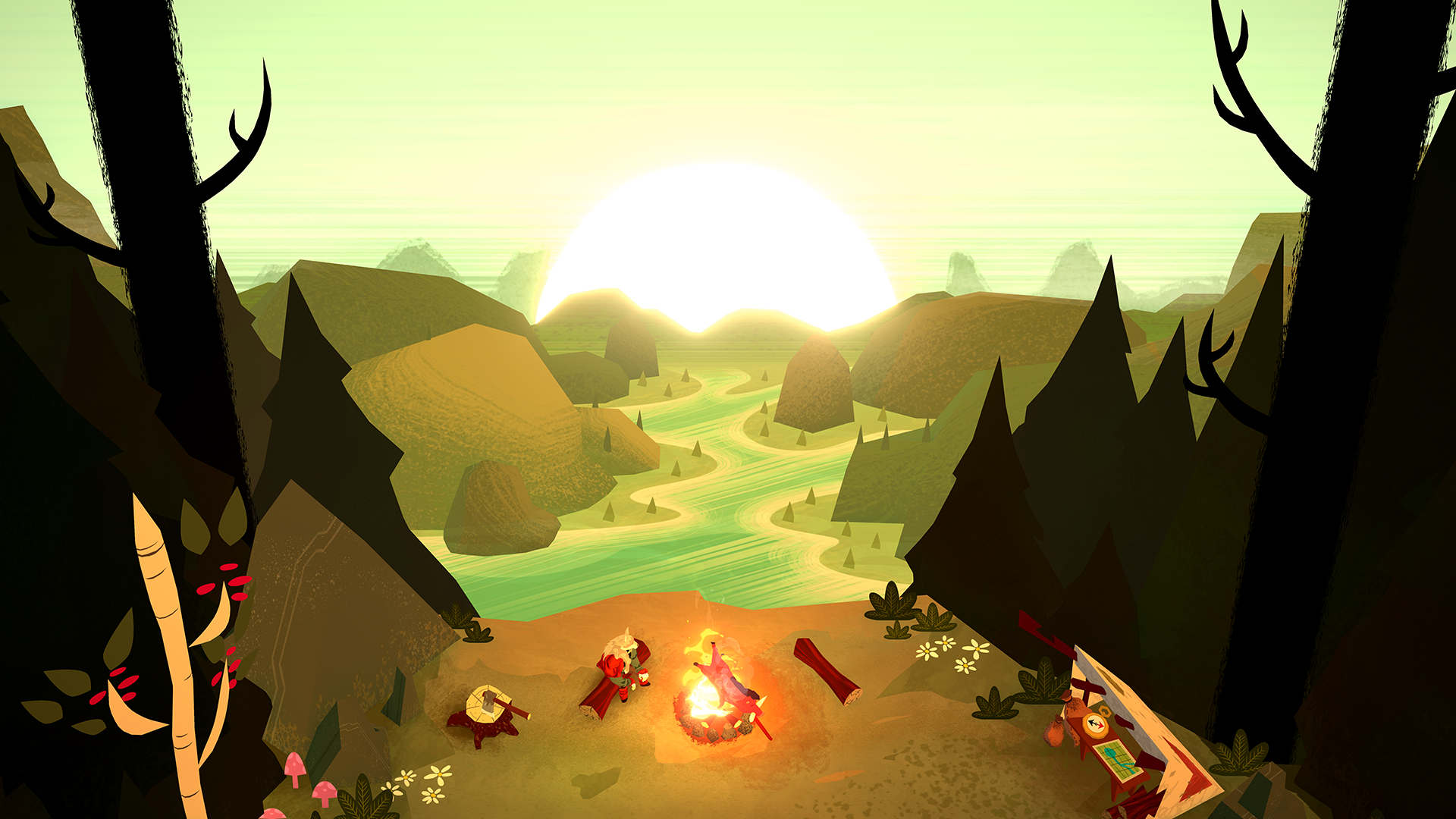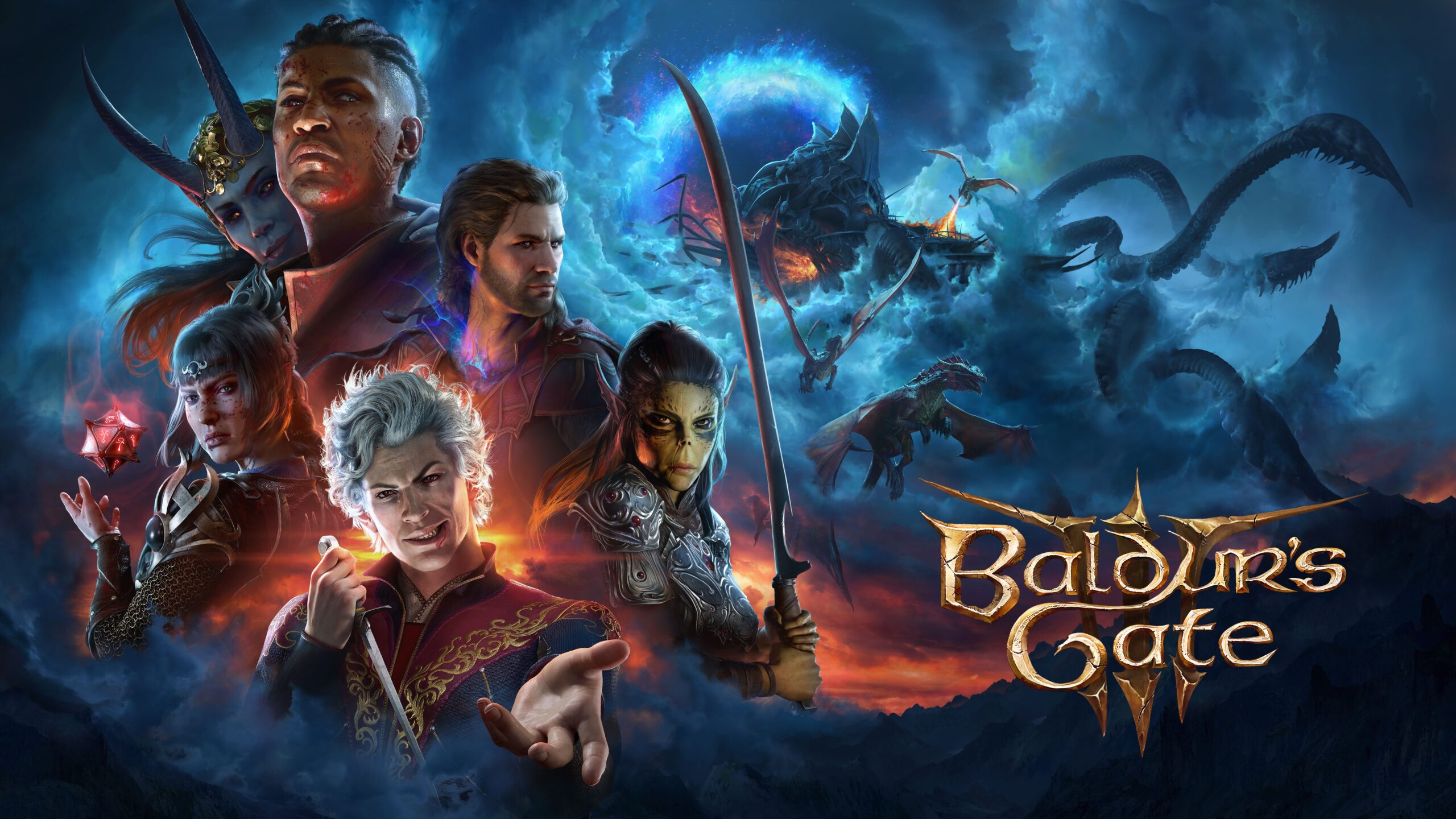
Review: Bloodroots
Bloodroots sells itself on two things: its world’s potential to be versatile and provide you with a litany of weapons and ways to approach enemy encounters, and its “Weird West” filled with a cast of “deranged” characters.
That first sell is legit. From pink flamingos to hulking buster swords, the world of Bloodroots allows Mr. Wolf to enact John Wick levels of violence frighteningly quickly, as he carves his way across the Weird West to get revenge on the people who betrayed him and left him for dead. It’s so satisfying.With each weapon’s differing moveset and abilities , traversing the battlefield is like a puzzle, a breakneck, blood puzzle. To keep Mr. Wolf alive (one hit will wreck both enemies and our protagonist) you have to stay moving, even if it’s just out of the enemies’ sight line. This creates a perpetual motion effect that allows for a lot of experimentation, and a lot of mistakes.
I died a lot playing this game.
A lot.
Checkpoints spawn at the beginning of each new area and there’s no saving in between, so if you die with half a stage cleared it’s right back to square one. Targeting enemies can be a bit wonky, especially if you’re using weapons that cause you to dash, like the sword or spit, and sometimes their trajectory can be unexpected. But because of its frenzied nature, it’s not all that frustrating to start an area again. What is frustrating is that second selling point.
As I said at the top, Bloodroots is set in the “Weird West,” which seems to be a sort of Looney Toons style imagining of what the Old West looks like. Everything from the art, to the music, to the overall aesthetic is geared towards this fantasy view of the American Old West (which is already mostly fantasy).
Yosemite Sam would probably feel right at home in this wacky reimagining (okay, maybe the rated M for Mature, mass murderer Yosemite Sam). With how hit or miss indie game coverage and sales can be, I get it. But Bloodroots absolutely did not need a gimmick to stand out. Its fun, and frenetic gameplay could easily find a sizeable audience in a world where nostalgia for Hotline Miami is growing daily. This game is engaging enough to stand on its own; it didn’t need a questionable wolfskin hat to seem special.
What’s more, this vision of the West, pared down to just the parts that feel fun and engaging, while leaving the rest of this time period’s extensive baggage behind is insulting. There’s no acknowledgement, or representation of indigenous folks, or any people of color, for that matter, in this game. Your enemies, be they the Big Bads or the cannon fodder in your way are all white. And yes, it’s definitely a good thing that this game doesn’t have you running around murdering Natives. But erasing them from the narrative so you can have a campy frontier tale with no consequences isn’t the answer either, especially coming from a Canadian dev, a country where indigenous issues are extremely top of mind right now.
This is indicative of a larger issue games need to contend with. From Infamous: Second Son to Greedfall, and now Bloodroots, games keep borrowing from indigenous people/a bloody and complicated history, without paying the proper respect they’re due. Second Son failed to use any actual indigenous actors for their threeNative characters, including the lead, and created a fictional hodgepodge of a Pacific Northwest culture to avoid having to do real research and consultation. Greedfall was a centrist colonialism sim in that ultimately had nothing of note to say. Like them, Bloodroots wants to play in this sandbox without getting dirty.
As we continue to push for inclusion and diversity in this industry, and as we often hail indies as the trailblazers on this front, we need to be thinking about this long-standing issue too. Devs need to examine the motive behind using Western/colonial settings. Are they using them to actually say something, or do they just want the audience buy-in of an alt-history period piece? Is the history and nastiness of these periods being addressed, or do we just find the vibe to be fun and quirky?
Including people of color and LGBTQ+ folks in games matters because we exist and we consume these games too. But what good does using a set dressing that re-creates harm of and/or erases people who have already been subjugated globally do? What value does this add?
Paper Cult could have created a revenge story in any kind of world, but they chose this one steeped in violence and racism, in an attempt to stand out. It’s cheap, it’s boring, and we all deserve better.
This game was reviewed on Nintendo Switch with a code provided by the developer.







